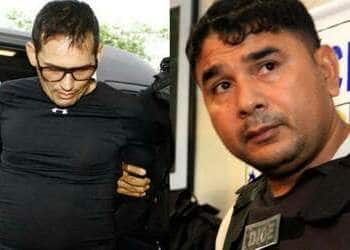A turf war among the founders of Familia do Norte, northern Brazil’s most powerful crime group, has left dozens of prisoners dead and will have major implications for criminal gang dynamics in the country.
In less than 48 hours, 55 prisoners were killed, many strangled, at four prisons in the state of Amazonas. The first 15 were killed on May 26 at the Anísio Jobim prison complex in Manaus. The killings stemmed from what appears to have been an uprising against the Familia do Norte’s (FDN) leader, José Roberto Fernandes Barbosa, alias “Zé Roberto da Compensa,” by João Pinto Carioca, alias “João Branco.” All 15 dead were identified as allies of Fernandes Barbosa.
On May 27, the turf war exploded across the state, with tit-for-tat fights breaking out at four prisons: Anísio Jobim, the Antônio Andrade penal institute, the Puraquequara prison and the Male Provisional Detention Center. In the fighting, 40 inmates were killed.
SEE ALSO: Massacre in Northern Brazil Points to PCC’s Continued Expansion
Authorities quickly blamed the two leaders for this violence, despite the fact that Zé Roberto da Compensa and João Branco are both in jails in the distant states of Mato Grosso and Paraná respectively.
According to authorities, João Branco is seeking to take over leadership of Familia do Norte (FDN), due to being unsettled by decisions made by Fernandes Barbosa, including the loss of power inside prisons, fewer drug sales and the end of a long alliance with Red Command (Comando Vermelho – CV), one of Brazil’s two largest gangs.
Amazonas governor Wilson Lima has sent around 100 men to reinforce security inside the prisons. The government’s spokesperson said intelligence reports had found there was little chance of the violence spilling out onto the streets. Both leaders were also moved to new federal prisons.
InSight Crime Analysis
This brutal reshuffling of power within Brazil’s third-largest criminal group also embroils its two larger rivals, the Red Command and the First Capital Command (Primeiro Comando da Capital – PCC).
In recent years, FDN has maintained a tight alliance with the Red Command. The alliance was crucial pact for the Red Command, whose power base lies in Rio de Janeiro, as FDN controls drug trafficking routes along waterways in the Amazon and toward neighboring countries, including Colombia, Bolivia, and Peru.
In January 2017, the Anísio Jobim prison saw the massacre of 56 prisoners, mostly PCC members, by the FDN and Red Command alliance. This sparked a wave of retaliatory bloodshed throughout Amazonas’ prison system, leaving 140 prisoners dead.
But since then, this alliance has broken up, which led to the rift between the two leaders. João Branco then founded a splinter group, known as FDN Pura (Pure FDN). This latest round of violence was FDN Pura’s attempt to take over the gang, directed by João Branco’s wife, Sheila Maria Faustino Peres, and a gang lieutenant, alias “Coquinho,” who stirred up sentiment against Fernandes Barbosa.
SEE ALSO: Red Command News and Profile
Videos circulating on social media after the massacre showed prisoners stating Sheila had ordered the killings. A list of inmates to be targeted was sent by text message to FDN Pura supporters at all four prisons.
But it appears the attempt backfired. While the 15 prisoners killed in the first attack were supporters of Fernandes Barbosa, the second day went poorly for FDN Pura.
It is uncertain where the feud now stands. The PCC’s and Red Command’s longstanding attempts to control northern Brazil will continue, as the region’s drug trafficking potential is too profitable to ignore. The role the FDN plays within these attempts will largely depend on who ends up controlling it.
Moving the two leaders and other key inmates to different prisons will only be a temporary solution. Certainly, with these massacres coming two years after the last round of killings in Amazonas prisons, there is little faith that authorities can control these prison gangs whatsoever.

